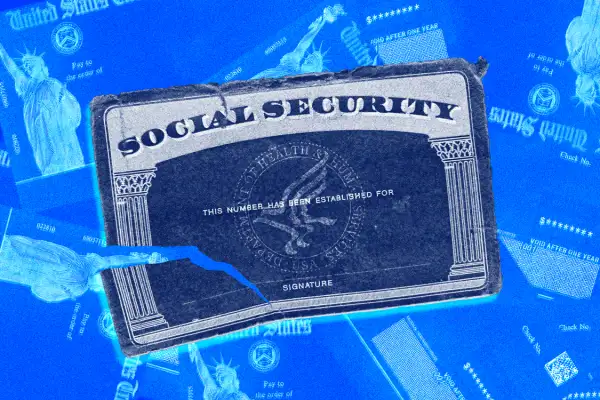Trump Administration Halts Student Debt Collections for Social Security Recipients

The Trump administration is temporarily walking back a decision to enforce harsh consequences for older adults who are behind on their student loan payments.
The Education Department will pause plans to offset the benefits of Social Security recipients who have defaulted on their federal student loans, spokeswoman Ellen Keast said in a statement Tuesday.
“The Trump Administration is committed to protecting Social Security recipients who oftentimes rely on a fixed income,” she said.
The decision is a reversal from the administration’s announcements earlier this spring, when officials said they planned to resume collections for defaulted borrowers, including wage garnishment and offsets from federal payments such as tax refunds and Social Security checks. Only the collections from Social Security recipients are paused; the department will continue other collections activity.
As many as 452,000 Social Security recipients who've defaulted on federal student loans could be at risk of losing some of their benefits to garnishment when the department does resume collections from older borrowers in default, according to a January report from the Consumer Financial Protection Bureau (CFPB).
Borrowers who are in default are at least 270 days, or about nine months, behind on their federal student loan payments, and the status typically comes with extreme financial consequences. However, those penalties were suspended in the early days of the pandemic.
Despite a dedicated program to help borrowers get out of default during the pandemic, millions remained in that status as first the student loan pause and then the on-ramp aimed at easing borrowers back into repayment ended. Since then, millions more borrowers have fallen into delinquency.
Older Americans with student debt are the fastest growing segment of borrowers, with the number of borrowers who are 62 and older surging 60% since 2017. That's one reason more retirees are at risk of losing Social Security benefits to garnishment. The growth in Social Security garnishment for student loan debt has concerned Democratic lawmakers, who sent a letter in March 2024 flagging that this issue was on the horizon.
The CFPB report shed new light on the severity of the problem before the pandemic, finding that the number of Social Security beneficiaries facing reduced benefits due to forced collections rose from around 6,200 in 2001 to 192,300 in 2019. (The last year with data since collections stopped in early 2020.) During the same period, the amount garnished increased from $16.2 million to $429.7 million.
There are limitations on how much money the government can garnish from an individual's Social Security benefits. But the amount that's completely protected ($750 per month) is well below a poverty level income and has not increased in almost 30 years, according to the CFPB report.
The report also states that "the majority of money the Department of Education has collected has been applied to interest and fees and has not affected borrowers’ principal amount owed." This means that when borrowers see their Social Security checks cut due to garnishment, the money taken from them often does not even reduce their debt.
It's not clear exactly when the department will ultimately resume collections for this group. The department's website for defaulted borrowers says it is "delaying offsets of these monthly benefits for a couple of months and plans to resume sometime this summer."
How to avoid Social Security garnishment for student loan debt
Borrowers who may be facing payment difficulties but are not in default are not at immediate risk of involuntary collections. To avoid harsh consequences from late payments, those borrowers can apply to an income-driven repayment plan with lower payments or request forbearance or deferment.
But note that if you're already in default, those flexibilities aren't available to you. For those borrowers, the Department of Education has resources for how to make repayment arrangements. A loan rehabilitation agreement, in which a borrower in default agrees to make nine "reasonable" payments in a timely manner, could prevent garnishment.
Keast said the department will begin proactive outreach to recipients about affordable loan repayment options and help them back into good standing.
There may be other options, too. According to the CFPB report, "as many as eight in ten Social Security beneficiaries with loans in default may be eligible to suspend or reduce forced collections due to financial hardship. Moreover, one in five Social Security beneficiaries may be eligible for discharge of their loans due to a disability. "
More from Money:
Best Long-Term Care Insurance Companies of 2024
Social Security Recipients Could See Checks Garnished if They're Behind on Student Loans
Have Medical Debt? Your Credit Score Could Increase Under New Policy


